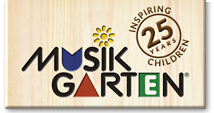Content and Measurement of Success in Early Childhood Education
This final installment in our continuing series of key discussion topics that early childhood educators face in the classroom has touched on several traditional assumptions that educators often make. Debunking many of those academic myths, we have focused instead on successfully nurturing children through inspired music education. Most of these conclusions and deliberations are posed and explored in an article published in Early Childhood Connections by renowned neuroscience educator Dr. Dee Joy Coulter, Ed. D. Our last blog topic considered the unnecessary urgency that some music educators place on curriculum and lesson plans. This final post of the series will address the issue of content and measurement of success in early childhood music education.
The difference between children’s music instruction and education
In the academic world, there is much debate and passion about the difference between instruction and education. In these approaches, roles of teacher and student are reversed, where in instruction the place of the teacher is central whereas the student is central in education. These methods in academia are not mutually exclusive, however. Music instruction, for example, requires technical training such as the proper way to hold a violin or drum mallet. These skills establish an important foundation for future musicianship, creating both respect for the instruments, but also developing ergonomically sound movements and postures. Repetition of these, in turn, introduce children to a world of practice. Children who have discovered the “practice effect” become much better equipped to deal with frustrations and failures in life without falling into a feeling of helplessness. Instructing these basic skills thus provides the music educator with a foundation of content that creates a fertile environment for children to inquire and explore musical concepts.
How do we measure the mastery of music instruction content?
There is a trend in education that puts emphasis on evaluation immediately after the lesson has been offered. Often referred to as summative evaluation, this is sometimes appropriate in the case that the lesson contained a range of facts or skills to be reinforced. However, the thinking of a child cannot be measured through a matter of facts or skills. So how and when should a children’s music teacher evaluate or measure success of musical thinking? It’s important for teachers to share ideas on these questions, but at the end of the day they must decide for themselves what they believe is worth teaching. Teachers often struggle with this concept, especially in early childhood education. Even early childhood education researchers continue to hunt for the most appropriate questions to ask in evaluating outcomes. Over time, educators should take time to understand what they really believe is worth teaching and learning in the early childhood music education field, and then continue to establish ways to measure these most important qualities.
General educators, and specifically children’s music teachers, are faced with several challenging issues that warrant continued exploration and discussion. Through this series of blog posts, we have endeavored to investigate some of those topics that we have found to appear time and time again. It is important for educators to contemplate and reflect on these issues as a way to reinvigorate and renew their commitment to teaching. As these important topics endure, so should the internal considerations and peer discussions by early childhood music educators. The gift of music to a child is something that warrants the devotion of those that are asked to inspire and educate.
This series of articles are based on the article DEFENDING the MAGIC: CURRENT ISSUES in EARLY CHILDHOOD EDUCATION, which appeared in Early Childhood Connections and written by Dee Joy Coulter, Ed. D. For more information on Dr. Coulter and her insights into early childhood music education, visit https://embraceyourbrain.com/





